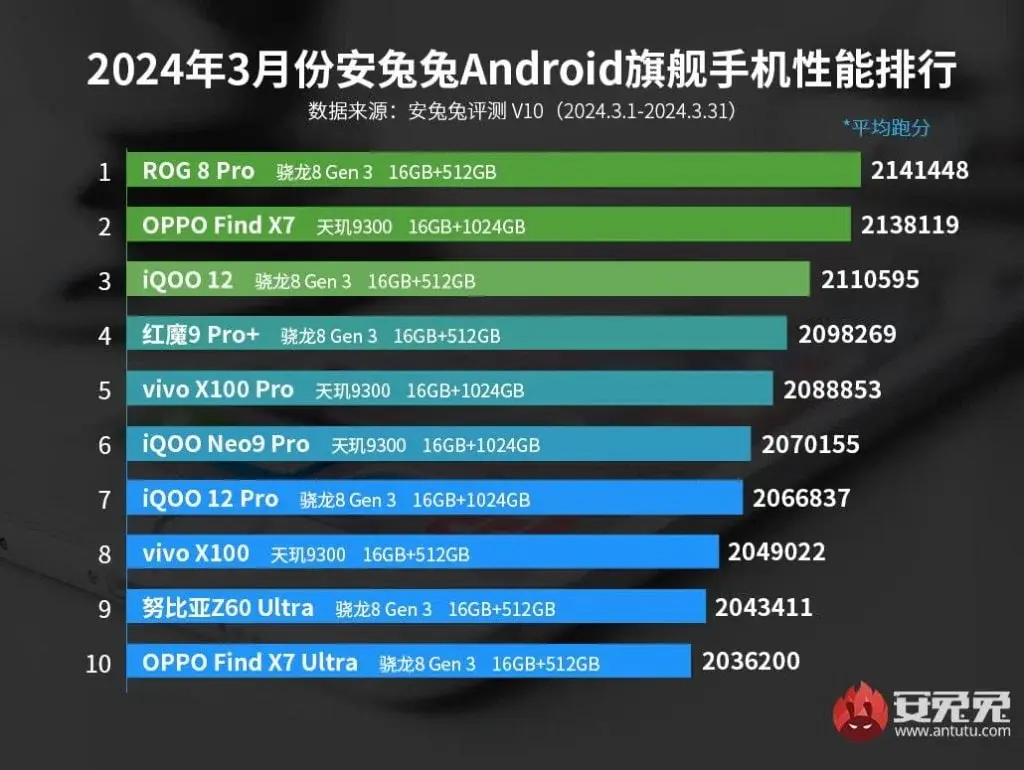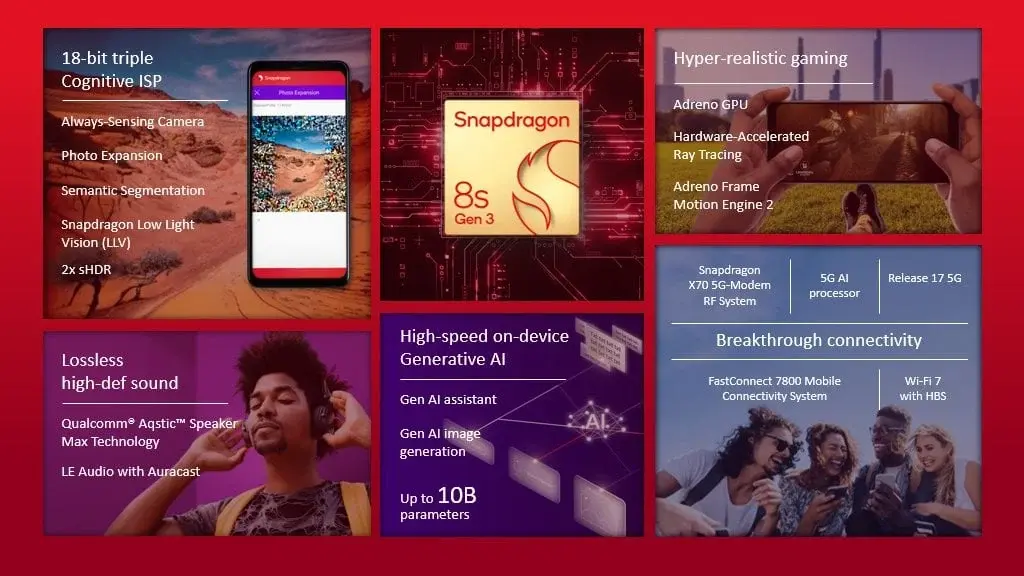AnTuTu recently unveiled its rankings for the best-performing flagship smartphones in March 2024, focusing on CPU, GPU, Memory (RAM), and UX performance. These metrics offer insights into how well these devices handle tasks like gaming. Below is the list of the top 10 smartphones according to AnTuTu:
AnTuTu Top 10 Smartphones in March 2024:
- Asus ROG Phone 8 Pro (Snapdragon 8 Gen 3, 16GB+512GB) – 2,141,448
- OPPO Find X7 (Dimensity 9300, 16GB+1TB) – 2,138,119
- iQOO 12 (Snapdragon 8 Gen 3, 16GB+512GB) – 2,110,595
- Red Magic 9 Pro+ (Snapdragon 8 Gen 3, 16GB+512GB) – 2,098,269
- Vivo X100 Pro (Dimensity 9300, 16GB+1TB) – 2,088,853
- iQOO Neo 9 Pro (Dimensity 9300, 16GB+1TB) – 2,070,155
- iQOO 12 Pro (Snapdragon 8 Gen 3, 16GB+1TB) – 2,066,837
- Vivo X100 (Dimensity 9300, 16GB+512GB) – 2,049,022
- Nubia Z60 Ultra (Snapdragon 8 Gen 3, 16GB+512GB) – 2,043,411
- OPPO Find X7 Ultra (Snapdragon 8 Gen 3, 16GB+512GB) – 2,036,200
Oppo Find X7

In February, OPPO’s Find X7, powered by Dimensity 9300, surpassed the Asus ROG Phone 8 Pro in performance. However, the ROG Phone 8 Pro has made a comeback in March 2024, claiming the top spot with a benchmark score of 2,141,448, thanks to recent optimizations.

Asus ROG Phone 8 Pro: Phantom Black
Despite this, the OPPO Find X7 is a close second with 2,138,119 points, trailing by only 3,329 points. This indicates a neck-and-neck competition between Dimensity 9300 and Snapdragon 8 Gen 3 chips, showcasing strong performance levels. The industry anticipates MediaTek and Qualcomm’s upcoming chips, including the Snapdragon 8 Gen 4 and Dimensity 9400, which are rumored to outperform Apple’s A18 Pro in multi-core tests.
The iQOO 12 secures the third spot, followed by Nubia’s Red Magic 9 Pro+ with a Snapdragon 8 Gen 3 SoC in fourth place. The Vivo X100 Pro, featuring Dimensity 9300, completes the top 5. Positions six to ten are occupied by iQOO Neo 9 Pro, iQOO 12 Pro, Vivo X100, Nubia Z60 Ultra, and OPPO Find X7 Ultra. Additionally, this month’s top-performing Flagship killers include the newly launched OnePlus Ace 3V, surpassing the Redmi K70E for the top position.
For more insights and details, you can refer to the official AnTuTu rankings for March 2024.



